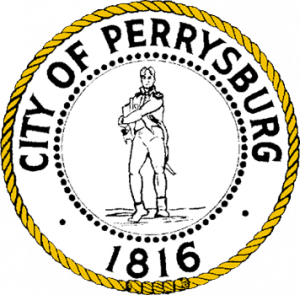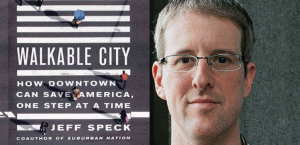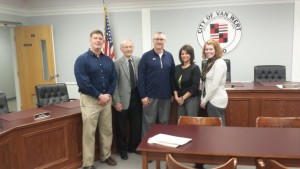Perrysburg remains Wood County’s most economically diverse and thriving community and is one of Northwest Ohio’s best magnets for economic and business growth. It remains one of the best places to own real estate in the county and region. When it comes to “economic gardening,” no other community in Northwest Ohio is as successful in providing residents, business owners, and entrepreneurs with innovation-based economic development tools. Downtown Perrysburg Inc. and the Perrysburg Chamber of Commerce help to ensure the City’s B2B (business to business) networks thrive.

The City of Perrysburg – Wood County’s most economically diverse and thriving community.
The facts that support this claim are:
- Perrysburg’s residential growth has increased 21.7% since 2000, and is the fastest growing community in the region. State average for residential growth in the last ten years was 1.7%.
- According to a recent study, Wood County was ranked as one of America’s Top Ten Small-Sized Counties (FEC Inc., 2012.). The ranking considers several measures within five areas: Investment, Talent, Sustainability, Place, and Diversity. These five areas serve as a foundation for future economic success.
- According to Stats America, Wood County has a 10-year per capita personal income (PCPI) growth of 7.3%, the highest in the region.
- Residents spend $3,500 more per capita on retail items than state average. According to the US Census, per capita income is $37,813, a 32% increase from the state average.
- Median household income from 2008-2012 averaged $69,341, a 30% increase from the state average, and one of the highest household incomes in the region.
- Median value of owner-occupied housing is $192,600, a 30% increase from the state average; Perrysburg has one of the highest housing values in the region.
- Over the last two years, Perrysburg has had more multi-family housing units under development than any other community in the region. This type of housing is extremely important in attracting young professionals and providing businesses with a diverse base of employees¹.
Recognizing the importance of its growing community, the Ohio Sea Grant College Program and Ohio State University Extension collaborated with the City of Perrysburg to conduct a Business Retention and Expansion (BR&E) Program. Because of this applied research effort, local leaders are better equipped to assist business needs in the city to achieve their growth objectives and to improve the overall business environment for the City of Perrysburg’s business community.

As a result of the BR&E program, the City of Perrysburg learned that:
- Forty businesses plan to expand, modernize or renovate their businesses with firms planning to add jobs within the next 12 months. These firms will add between 58-177 new full-time equivalent jobs.
- 177 new jobs are estimated to represent $101,063 in additional income tax revenue and would contribute an estimated $6,737,505 in personal income to Perrysburg’s local economy.
- Jobs are projected as being added in the professional services, retail and commercial service sectors. 116 businesses plan to retain up to 2,880 full-time equivalent jobs.
The BR&E program in Perrysburg aims to:
- Identify and address concerns and issues of existing businesses by creating a value-chain of partners, including local and state government as well as private organizations and enterprises.
- Identify opportunities to stimulate local job growth, and establish and maintain long-term relationships among public and private entities associated with the Perrysburg local economy.
To learn more about the City of Perrysburg BR&E program, see the final report. Click here to learn more about the Ohio BR&E Program.
¹City of Perrysburg website: https://www.ci.perrysburg.oh.us/index.php/economic-development

Joe Lucente is an Associate Professor for the Ohio Sea Grant College Program and Ohio State University Extension.
 Who among us doesn’t want to live, work and play in a vibrant community? In addition to supporting local entrepreneurs, each of us can help to cultivate community vitality by understanding the larger strategies designed to assist small businesses to grow and thrive. Programs that help to develop business plans, obtain financing and market and manage enterprises are frequently included in a community’s economic “tool box.” Universities, Small Business Development Centers and local Chambers of Commerce often provide direct assistance that can range from one-on-one consultation to classroom instruction and group workshops.
Who among us doesn’t want to live, work and play in a vibrant community? In addition to supporting local entrepreneurs, each of us can help to cultivate community vitality by understanding the larger strategies designed to assist small businesses to grow and thrive. Programs that help to develop business plans, obtain financing and market and manage enterprises are frequently included in a community’s economic “tool box.” Universities, Small Business Development Centers and local Chambers of Commerce often provide direct assistance that can range from one-on-one consultation to classroom instruction and group workshops.





 As recently as two weeks ago, Extension CD professionals David Civittolo and Joe Lucente visited with colleagues at the University of Florida to deliver a three-day train the trainer program. Twelve University of Florida Extension agents learned the nuts and bolts of the traditional BR&E program and were also introduced to a newly-revised curriculum module: BR&E for Agri-business.
As recently as two weeks ago, Extension CD professionals David Civittolo and Joe Lucente visited with colleagues at the University of Florida to deliver a three-day train the trainer program. Twelve University of Florida Extension agents learned the nuts and bolts of the traditional BR&E program and were also introduced to a newly-revised curriculum module: BR&E for Agri-business. For example, one business indicated during an interview that they needed assistance purchasing more locally grown vegetables for their high-end restaurant. As a result of the interview, Florida Extension agents were able to put the owner in touch with a local greenhouse that is in a position to provide more locally grown vegetables.
For example, one business indicated during an interview that they needed assistance purchasing more locally grown vegetables for their high-end restaurant. As a result of the interview, Florida Extension agents were able to put the owner in touch with a local greenhouse that is in a position to provide more locally grown vegetables.
 Communities across the nation have seen the positive impacts a thriving downtown has on community development. If you believe your downtown could use a little TLC, suggest to your community development leaders consider strategies for revitalizing your downtown.
Communities across the nation have seen the positive impacts a thriving downtown has on community development. If you believe your downtown could use a little TLC, suggest to your community development leaders consider strategies for revitalizing your downtown. Does your community’s main street have empty retail store fronts?
Does your community’s main street have empty retail store fronts?

